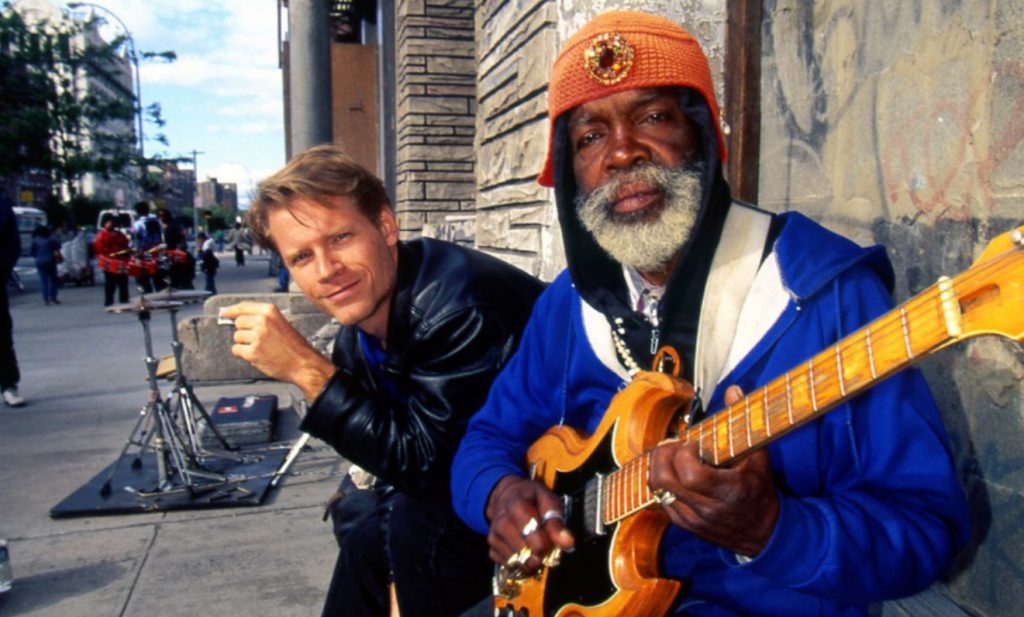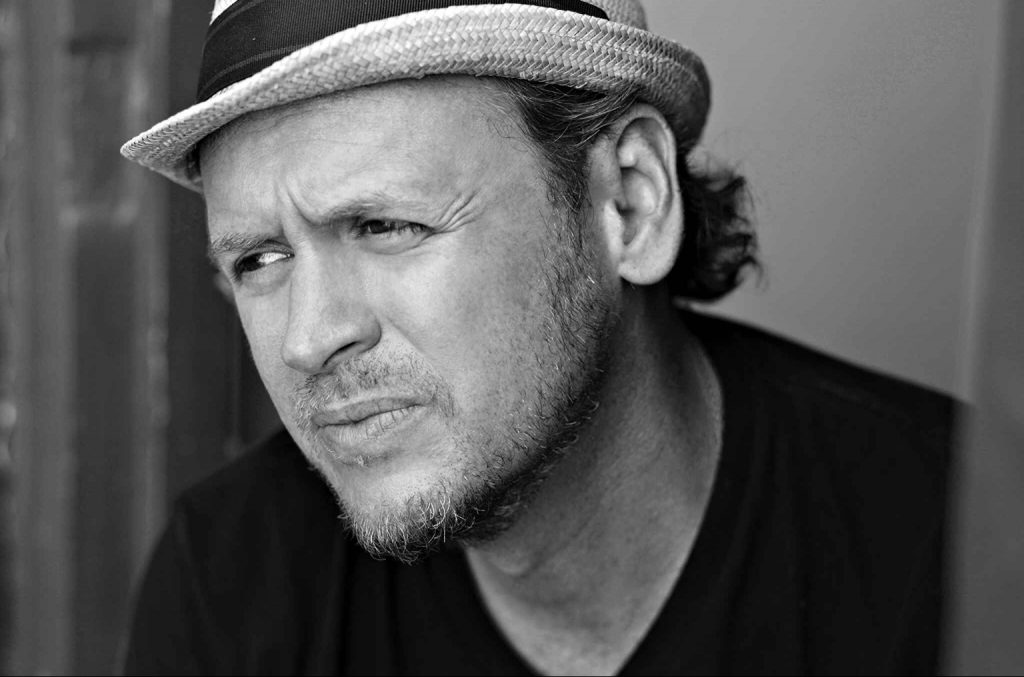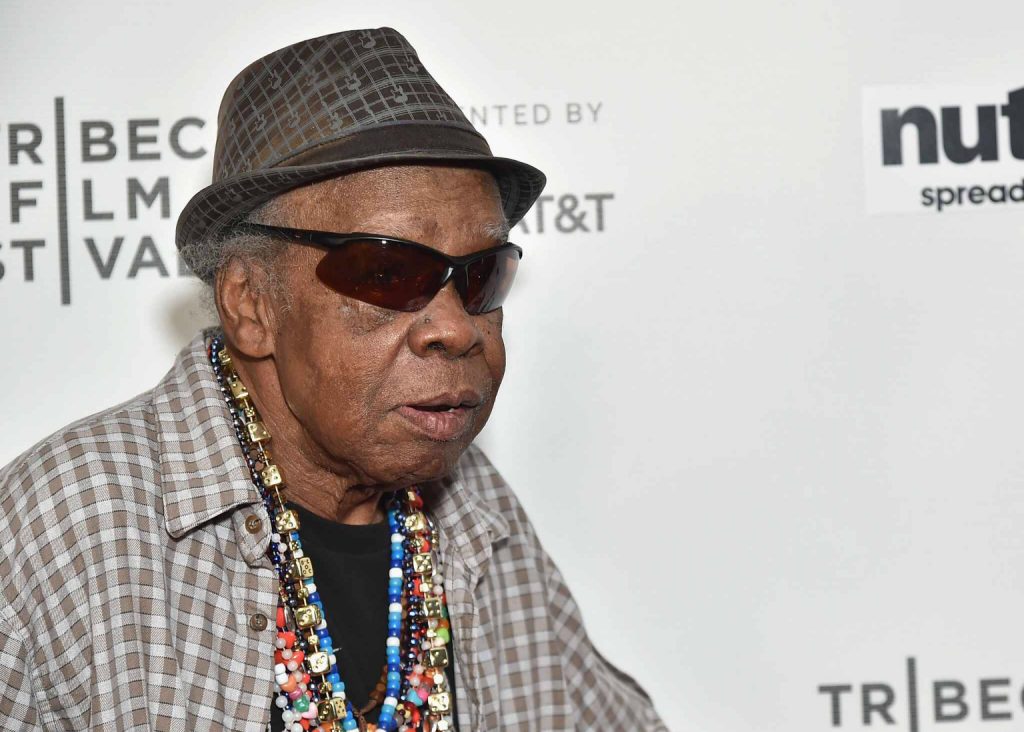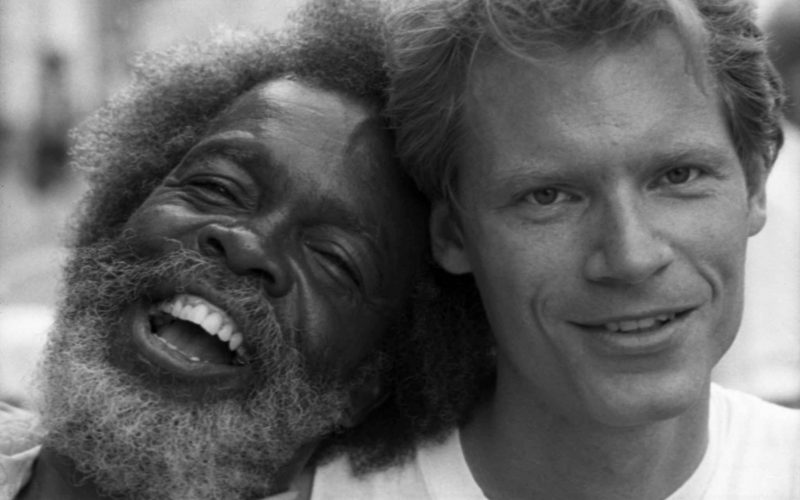Satan & Adam (2018)
Back in 1986, a young New Yorker and Princeton graduate, Adam Gussow was going through a particularly hard break-up. After getting on the train, he found himself in Harlem, not the best place for a posh Ivy League white guy to be in the ‘80s (as the Reverend Al Sharpton stated; Adam had to be either ignorant or arrogant to ‘cross the tracks’ at this time). Yet cross them he did and on the corner of 114th Street and Broadway he heard a street musician who called himself Mister Satan. Mister Satan (real name Sterling Magee) played an excellent guitar, sometimes jammed with a number of other musicians, and sometimes by himself, providing his own percussion. Adam was so impressed that he – himself an accomplished Harmonica player – asked if he could sit in and jam. On this particular New York street they became an almost instant hit with crowds gathering to see this strange duo playing the blues.
As time went on Adam wanted more and Mister Satan agreed. They recorded a demo which sold well and soon they were being booked in nightclubs. This caught the attention of promoters and managers and they were soon performing at Blues festivals throughout the USA, and supporting Bo Diddley on his European tour. They recorded a number of critically acclaimed albums and even featured on U2’s Rattle and Hum album, becoming the only non-U2 artists to perform on a U2 album without the megastars involved on the track.

Then, in 1998, Mister Satan disappeared. Adam didn’t find out where he was for another two years and it would take a lot longer before they saw each other again face to face.
This incredible journey is recounted in a new documentary currently available on Netflix. Directed by V. Scott Balcerek, Satan & Adam is as curious as the two men it depicts. It starts with their first meeting and hardly looks any further back, only briefly looking at Magee’s pre-Mister Satan career. Instead, it focuses almost entirely on the rise, fall and rise again of the double act.
The first rise – from street to studio, from festivals to awards and recording contracts, is what you would expect from a documentary like this. It’s a familiar tale with only the fact that we have a middle-class white guy and a poor black guy to differentiate it from others of the genre. The music is uniformly excellent and there are a number of celebrity interviews including U2’s The Edge and Harry Shearer who, in addition to his regular slot on The Simpsons, is also an accomplished musician (he was of course This Is Spinal Tap’s Derek Smalls). If this was all there was to it, Satan & Adam would still be an entertaining documentary simply because the story is so unconventional and the music so great. However, it’s after the duo disbanded and the rediscovery of Magee in Florida that it veers from the usual structure and becomes something quite different.

Magee had suffered a nervous breakdown and had a minor stroke, and he was living in a small house in his home state. He later went into a nursing home where the Entertainment Manager started to become curious, especially as Magee kept drumming a rhythm on his body and anything around him. The manager did some research and soon the story was revealed. Slowly Magee, who had closed himself off from the world and had given up the chance of ever playing again, slowly re-emerged into the world, picking up the guitar once more and, although his ability had been compromised because of the stroke, started playing in a small band at the nursing home.
This second half of the story becomes less about Adam Gussow and more about the effects of age and mental health. The filmmakers no longer look back as they did in the first half of the film but instead witness this remarkable comeback. From the moment Magee is rediscovered in Florida, to the final scene – a concert performance on his 80th birthday – we are witness to an incredible story of friendship and hope. Satan & Adam warms your heart and is a testament to the power of faith in the human spirit.
It’s not a film without flaws. I would have liked more information on the music industry in the ‘60s and ‘70s and an investigation into what led Sterling Magee to become Mister Satan as this is covered only briefly. The poor way that the music industry often treated its black stars is hinted at but this is just in passing. As I am a lifelong fan of this style of music, it’s something that I’ve seen and read before in numerous books, documentaries and films, but for films like this to work, it has to appeal to a more general audience, not just to dedicated blues lovers.

I’d have liked to have heard more of the duo’s original music. Its vibrancy and enthusiasm are infectious and, for a casual viewer, more of an introduction would have been desirable. For those of you who have watched Satan & Adam and want more, they recorded a number of great albums and I would highly recommend Harlem Blues, their first collaboration. Adam Gussow also wrote a great memoir – Mister Satan’s Apprentice – if you’re looking for more depth.
Despite these minor gripes, Satan & Adam is a moving portrait of two remarkable men who crossed boundaries, how they triumphed, suffered and survived, and became unlikely life-long friends. Hopefully it will encourage more people to listen to these great musicians and pass this wonderful story on.
Film’89 Verdict – 8/10
Satan & Adam is available now on Netflix (regional variances may apply).

